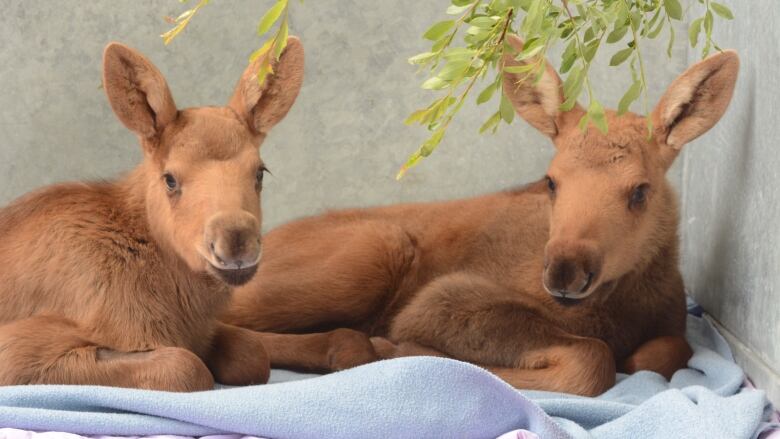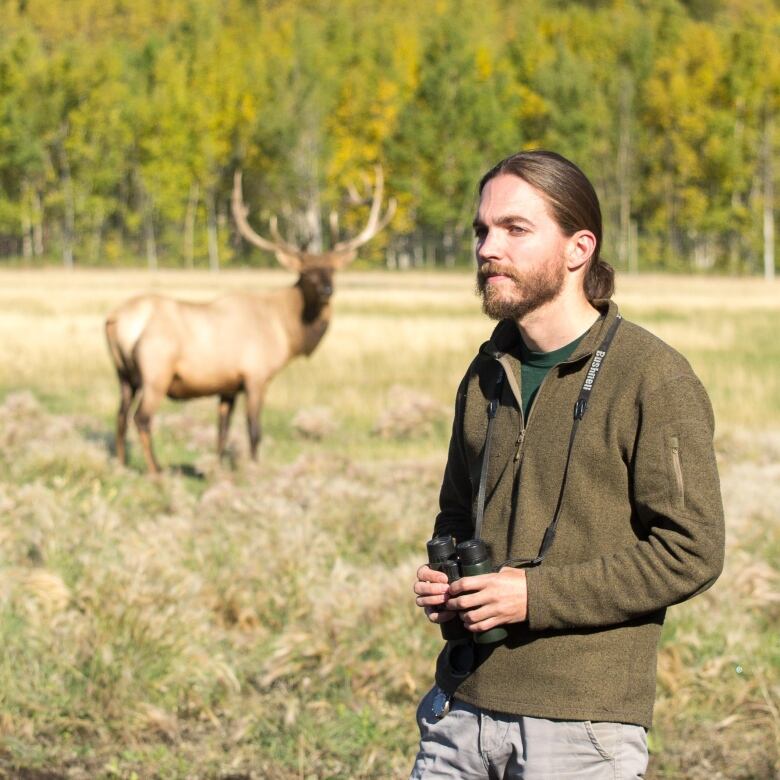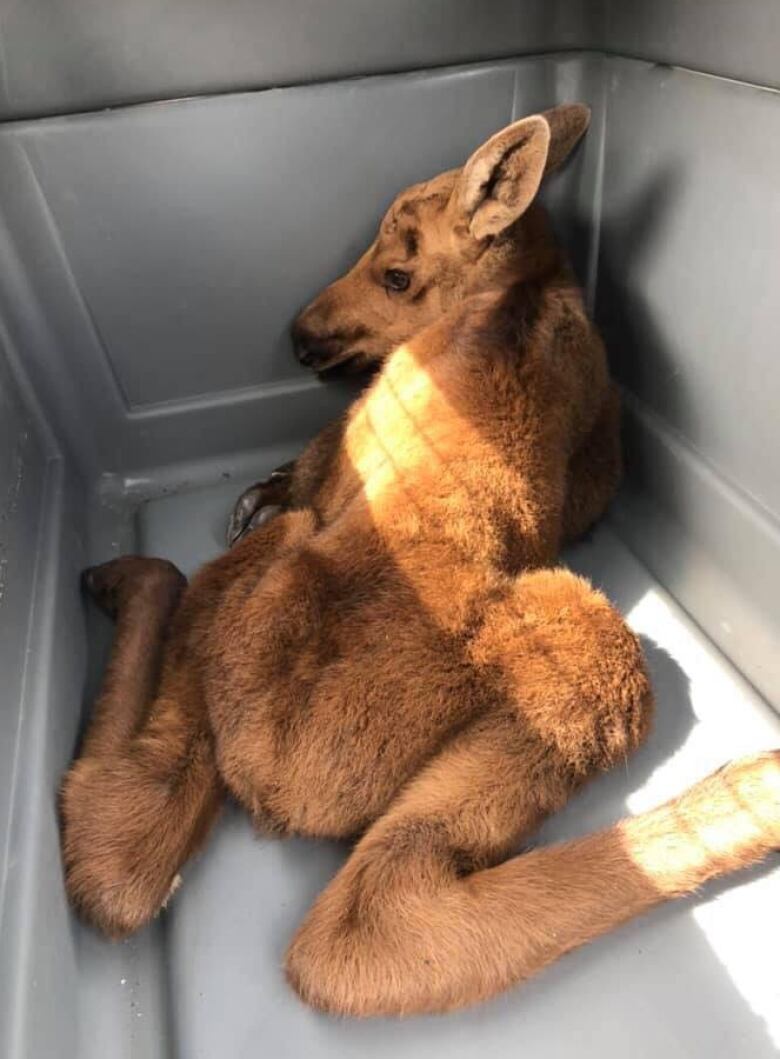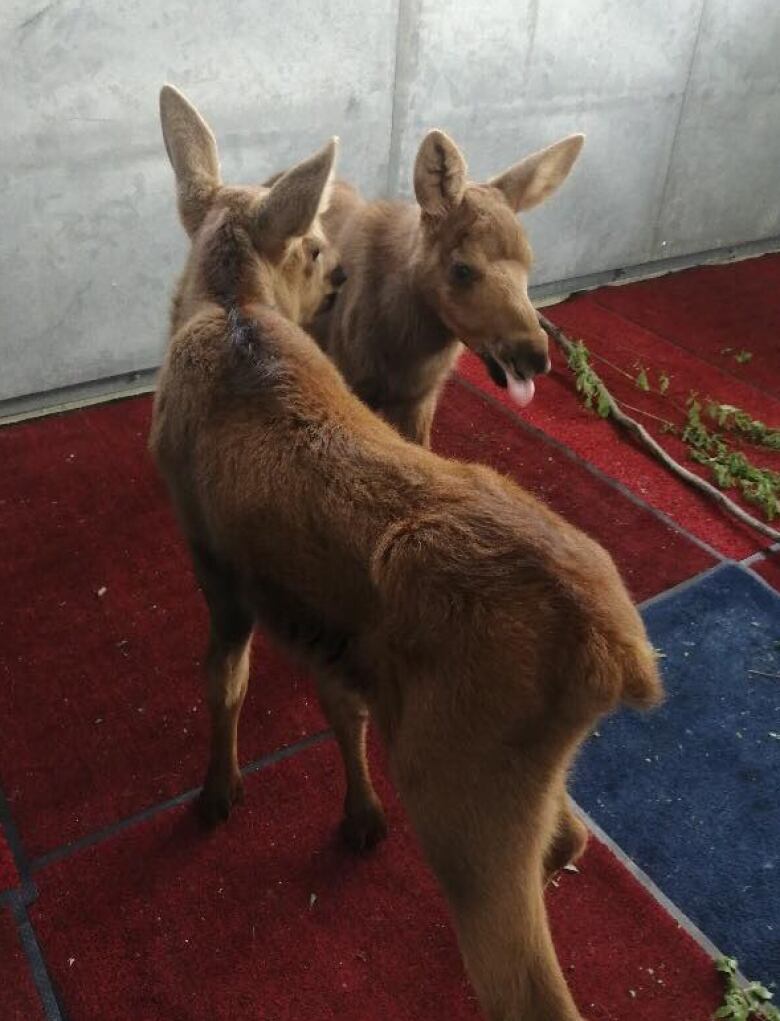2 orphaned moose arrive at Yukon Wildlife Preserve within weeks of each other
The 2 animals, brought from different parts of Yukon, have become fast friends

The Yukon Wildlife Preserve near Whitehorse often takes in orphaned animals that wouldn't survive in the wild. But it's rare that two unrelated orphans of the same species arrive within weeks of each other.
That's what happened recently, with two young moose arriving from different parts of the territory.
And so far, they seem to be getting along famously. They might even be helping each other cope with the stress they've been under.
"Wildlife rehabilitation is extremely stressful for the animals, because it puts them out of their normal space. And so having companionship is really valuable," said Jake Paleczny, executive director of the preserve.
And according tothe preserve's on-site veterinarian, Maria Hallock, the two animals "absolutely love each other."

The first moose calf arrived at the preserve about two and a half weeks ago, after conservation officers spotted it wandering alone in the bush near Faro.
Paleczny saysthoseofficerskept their eyes on it for about 48 hours, with no sign of themama moose.
"That's a long time to go without without a parent when you're still nursing. And so they arranged to have it brought down to the Yukon Wildlife Preserve," hesaid.
Then earlier this week, the other moose was caught by a government biologist near Watson Lake, Yukon, a couple of days after itsmother had been killed on the highway.
"It got to the point where, as I understand, it probably was less able to really run away andyou know, getting weaker. Still healthy, but getting weak.And they brought that mooseup to the Yukon Wildlife Preserve," Paleczny said.

Hallock sayswhenthe two orphans met, they bonded "instantly."
"When the second one came along, he initially didn't even want to leave the crate, he was afraid ... but the minute he saw the second calf, he jumped out of the crate," she says. "Now ...they can't be without one another anymore. They sleep together, theywalk together, they do things together, they learn from one another, which is quite, quite awesome."
Survival is not certain
Paleczny says it's still a big job, helping the youngstersadjust to their new home and it's not certain they'll even survive their ordeal.He figures they're both about four to six weeks old.
Hallockand other staff at the preserve will tend to them closely, he says, but it's not always easy to recognize physical problems or ailments soon enough. In a young animal, things can go south quickly, he says.

"We're planning for the worst, but hoping for the best," he says.
"It's a wild animal that's in a challenging place ... we do our best to sort of make an environment that's going to help support their survival, butit's stressful being around people, it's stressful being out of their natural habitat."
Hallock says their chances of survival at the preserve are"pretty good, but not 100 per cent."
In the wild, though, their days were likely numbered, she says.Without mother's milk, they would have weakened and fallen prey to other animals.
"The chances of them becoming somebody's food was very high."
If all goes well, the two furry young friendswill become the fourth and fifthmoose at the wildlife preserve, and will eventually be visible to the public.
They'lljoin threeolder moose already living theretwo of them also found as orphans, several years ago.

With files from Philippe Morin












_(720p).jpg)


 OFFICIAL HD MUSIC VIDEO.jpg)
.jpg)



























































































